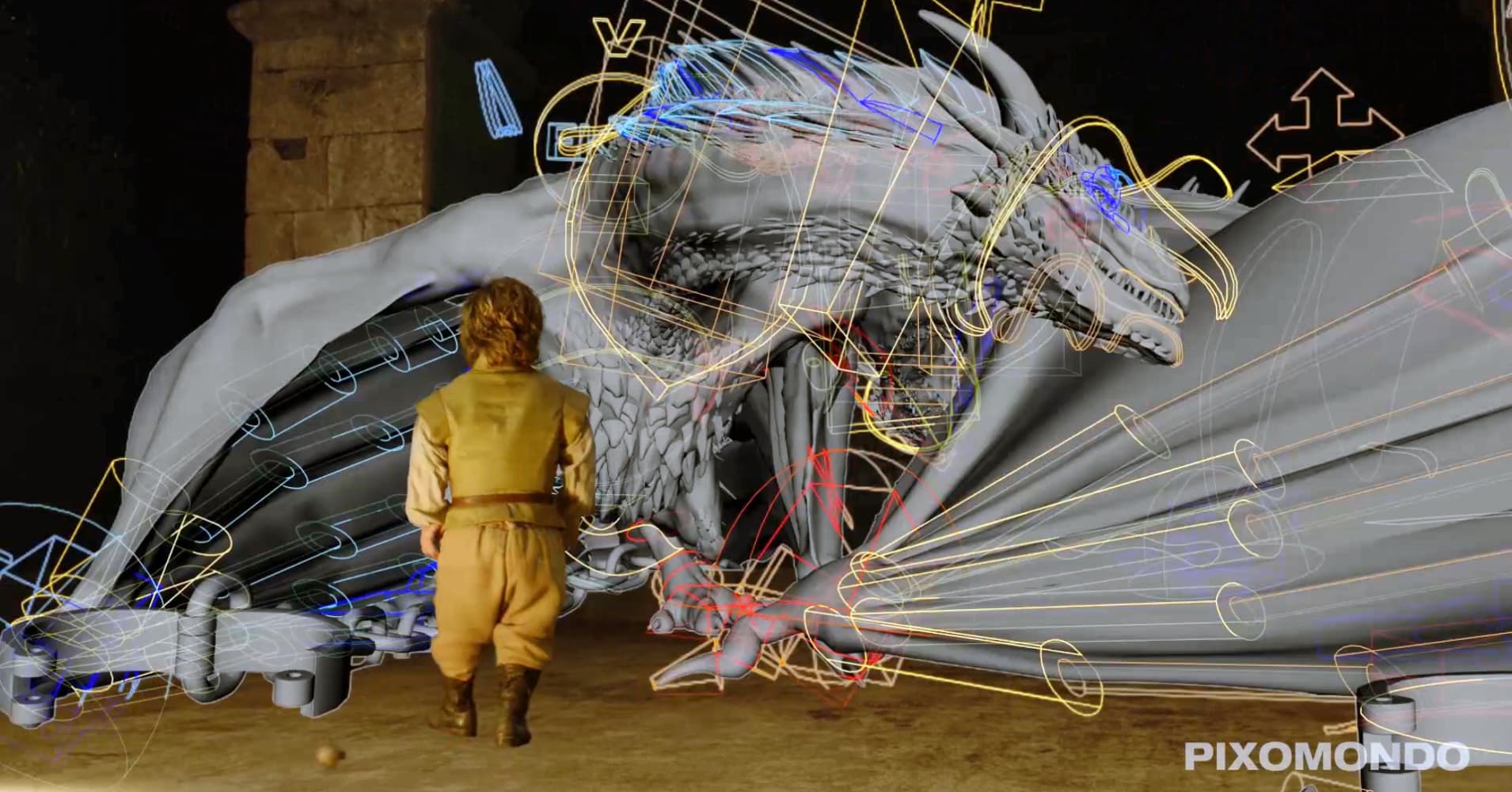
How do you bring a fire-breathing dragon to life?
It starts with studying the movement of real-life lizards and bats, according to Sven Martin, the visual effects supervisor at Pixomondo. The company helped create dragons for HBO’s blockbuster “Game of Thrones”, which concludes its seventh season tonight.
Martin and his team needed to create creatures that would look and sound as realistic as possible because they would have to seamlessly interact with actors in real locations such as Spain, Croatia and Iceland.
“We wanted the visual effects to feel real, not artificial,” Martin tells CNBC. “Everything you see is based on real animals. We took the best parts of what nature gave us.”
The show – which boasted a reported budget of $10 million per episode last season – relies on 14 visual effects (VFX) firms from all over the world to create elaborate castles and armies of the dead. Fans clearly appreciate their hard work: this season has been the most popular yet, averaging 10 million viewers every Sunday night, according to data from Nielsen.
Presenting a mythical creature convincingly for an audience requires the expertise of many different professionals.
For example, Rhythm & Hues – an Emmy Award-winning visual effects studio in Los Angeles – also created dragons for “Game of Thrones” this season. 71 employees participated in the effort, including more than 10 animators (who made sure the skin and muscles appeared as realistic as possible), one rigger (who built the skeleton of the beast), three lighters, and 10 compositors (who assembled all the elements for the screen) as well as producers and coordinators.
Source: Tech CNBC
How the fire-breathing dragons on 'Game of Thrones' are made